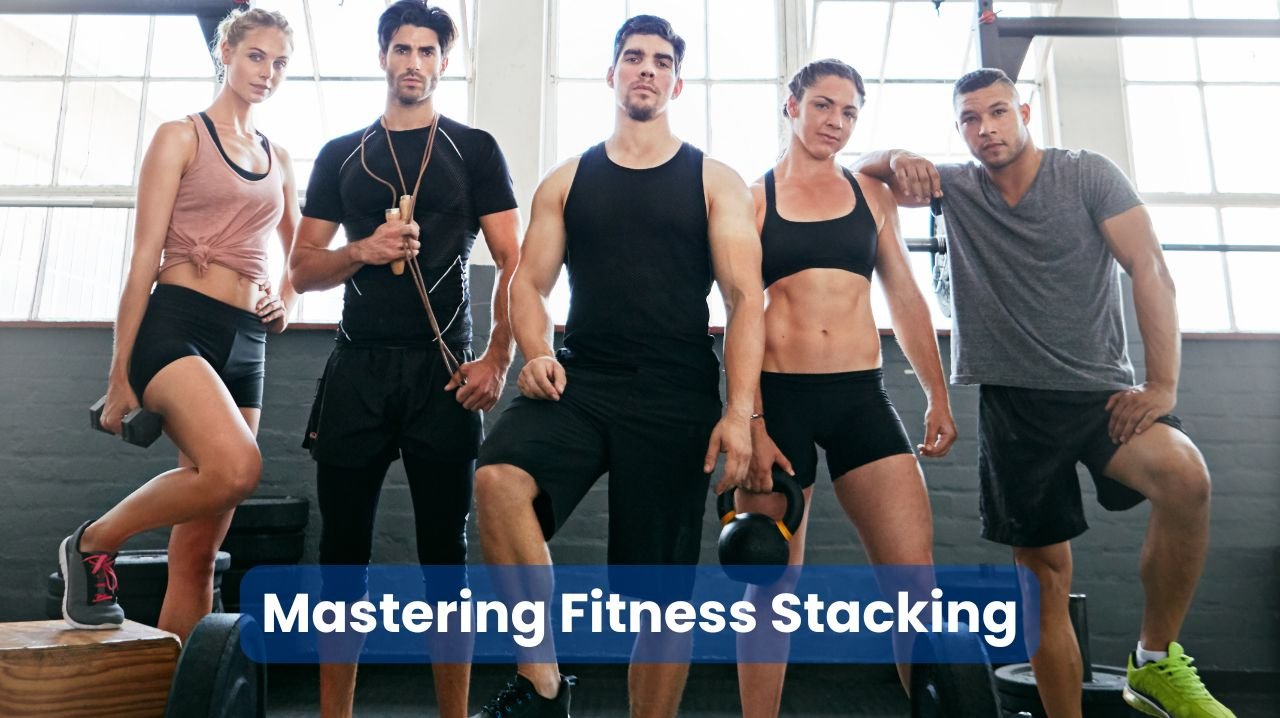Mastering Fitness Stacking: A Comprehensive Guide
For fitness enthusiasts looking to maximize their results and efficiency, fitness stacking has emerged as a game-changing approach to workout planning.
This innovative training method combines different types of exercises and fitness modalities to create a comprehensive, time-efficient workout routine that delivers multiple benefits simultaneously.
👉 Boost in Focus and Energy to Help Increase Pumps and Performance
👉 Increase Gains, Promote Muscle Growth and Boost Energy
👉 Powerful Muscle Growth, Increased Blood Flow, and Enhanced Pumps
👉 Bulk-Up, Increase Gains, And Improve Recovery
Understanding Fitness Stacking
Fitness stacking is similar to habit stacking, a productivity concept where new habits are built upon existing ones. In the fitness context, it involves strategically combining different types of exercises or training methods within the same workout session to achieve multiple fitness goals simultaneously.
Key Benefits of Fitness Stacking
- Saves valuable time by combining multiple training elements
- Increases overall workout efficiency
- Prevents exercise plateaus
- Improves functional fitness
- Reduces workout monotony
- Enhances metabolic conditioning
- Creates more balanced fitness development
Types of Fitness Elements That Can Be Stacked
Cardiovascular Training
- High-Intensity Interval Training (HIIT)
- Steady-state cardio
- Sprint work
- Plyometrics
- Jump rope
- Rowing
- Cycling
Strength Training
- Compound exercises
- Resistance training
- Bodyweight exercises
- Olympic lifts
- Kettlebell work
- Band exercises
- Free weights
Flexibility and Mobility
- Dynamic stretching
- Yoga flows
- Mobility drills
- Range of motion exercises
- Joint stability work
- Active stretching
- Movement patterns
Skill-Based Training
- Balance work
- Agility drills
- Coordination exercises
- Sport-specific skills
- Reaction training
- Footwork drills
- Core control
Common Fitness Stacking Combinations
Here’s a helpful reference table showing effective exercise combinations:
| Primary Focus | Secondary Element | Tertiary Element | Time Frame |
|---|---|---|---|
| Strength | HIIT | Mobility | 45-60 min |
| Cardio | Bodyweight | Balance | 30-45 min |
| Power | Flexibility | Core | 40-50 min |
| Endurance | Skill Work | Strength | 50-60 min |
| HIIT | Core | Mobility | 35-45 min |
How to Create Your Own Fitness Stack
Step 1: Assess Your Goals and Current Fitness Level
Before diving into fitness stacking, it’s essential to clearly understand what you want to achieve. Common fitness goals include:
- Building strength
- Improving endurance
- Increasing flexibility
- Enhancing athletic performance
- Losing weight
- Developing better coordination
- Maintaining overall fitness
Step 2: Choose Compatible Exercises
When selecting exercises to stack, consider:
- Exercise intensity levels
- Muscle groups targeted
- Energy systems used
- Recovery requirements
- Available equipment
- Time constraints
- Personal preferences
Step 3: Structure Your Workout
A well-designed fitness stack typically follows this format:
- Warm-up (5-10 minutes)
- Primary training focus (15-20 minutes)
- Secondary element (10-15 minutes)
- Tertiary element (5-10 minutes)
- Cool-down (5-10 minutes)
Sample Fitness Stacking Workouts
Beginner Stack
- Warm-up with dynamic stretches (5 minutes)
- Bodyweight circuit (15 minutes):
- Push-ups
- Squats
- Lunges
- Plank holds
- Light cardio intervals (10 minutes)
- Basic mobility work (5 minutes)
- Cool-down stretches (5 minutes)
Intermediate Stack
- Dynamic warm-up (8 minutes)
- Strength training (20 minutes):
- Deadlifts
- Bench press
- Rows
- Shoulder press
- HIIT cardio (12 minutes)
- Core work (10 minutes)
- Mobility/flexibility (10 minutes)
Advanced Stack
- Movement prep (10 minutes)
- Olympic lifting (20 minutes)
- Complex bodyweight movements (15 minutes)
- Sport-specific drills (10 minutes)
- Recovery work (5 minutes)
Tips for Successful Fitness Stacking
Safety Considerations
- Always maintain proper form
- Progress gradually
- Listen to your body
- Allow adequate recovery time
- Stay hydrated
- Warm up thoroughly
- Cool down properly
Programming Guidelines
- Start with 2-3 stacked elements
- Focus on complementary exercises
- Avoid overtraining same muscle groups
- Balance intensity levels
- Include rest periods
- Monitor fatigue levels
- Adjust as needed
Common Mistakes to Avoid
Programming Errors
- Stacking too many elements too soon
- Combining incompatible exercises
- Neglecting proper progression
- Insufficient recovery time
- Overemphasis on one aspect
- Poor exercise selection
- Inadequate warm-up
Technical Mistakes
- Sacrificing form for intensity
- Rushing between exercises
- Skipping rest periods
- Insufficient hydration
- Poor breathing technique
- Inconsistent execution
- Improper equipment use
Measuring Progress
Tracking Methods
- Workout journal
- Fitness apps
- Performance metrics
- Progress photos
- Body measurements
- Strength benchmarks
- Endurance tests
Adapting Your Fitness Stack
When to Modify Your Stack
- Plateau in progress
- Change in goals
- Time constraints change
- New equipment available
- Injury recovery
- Seasonal variations
- Life changes
👉 Pack On Muscle Mass and Get Bigger and Stronger
👉 Burn Fat and Get Seriously Ripped
👉 Get Explosive Strength and Maximum Stamina
👉 Become A Gym Beast With Legal SARMs Alternatives
Conclusion
Fitness stacking is a versatile and efficient approach to exercise that can help individuals achieve multiple fitness goals simultaneously. By thoughtfully combining different training elements, anyone from beginners to advanced athletes can create effective, time-efficient workouts that maintain interest and promote consistent progress.
Remember to start conservatively, focus on proper form, and gradually increase complexity as fitness improves. With proper planning and execution, fitness stacking can become a valuable tool in any fitness enthusiast’s training arsenal.
Whether you’re looking to maximize your workout time, break through plateaus, or simply add variety to your routine, fitness stacking offers a structured approach to achieve your fitness goals.
Start with basic combinations and progressively add complexity as you become more comfortable with the concept. The key is to remain consistent, monitor your progress, and adjust your stacks as needed to continue seeing results.







